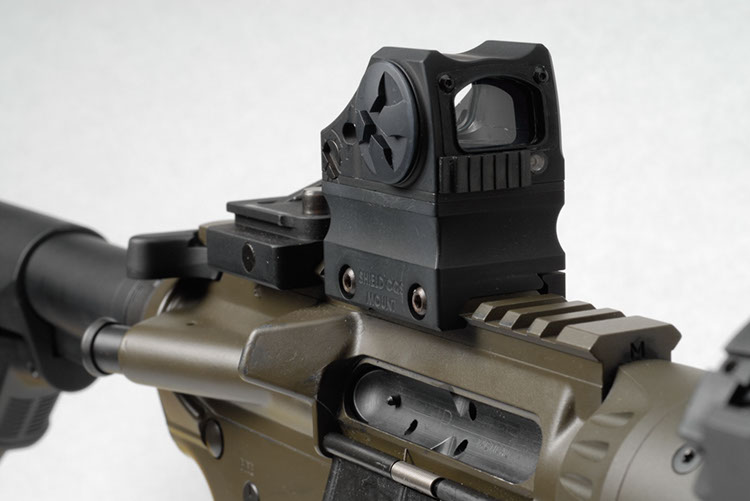
It's hard not to see the attraction of a reflex sight. Simple, incredibly easy to use, and typically compact, they're slowly revolutionizing the way people aim their firearms. With a reflex sight, no longer does the accuracy of an optic need to compromise your field of view; allowing the fastest possible target acquisition alongside the most natural transition from pointing to aiming.
But to understand what makes a reflex sight so easy to use, you need to understand the issue of parallax, and how it affects accuracy. In the case of a traditional optic, the various lenses contained within are obviously assembled under the strictest tolerances to line up longitudinally with the reticle. The problem is, the human eye isn't always perfectly aligned with the centre of those lenses, which can result in a degree of distortion known as parallax. For the simplest explanation of this phenomenon, you need only use a finger and your eyes. Start by pointing a finger at an object across the room. Then, close the opposite eye (if you're pointing with your left hand, close your right eye, for example) and move your head left to right. You'll notice that as you do this, your finger appears to change its position, and subsequently, what it appears to be pointing at. In the case of a rifle scope, your finger is representative of the crosshairs, which in turn can end up appearing to point in different directions relative to where your eye is located behind them.
Reflex sights, at least high quality ones, are almost completely devoid of this effect. By reflecting light upon a lens to represent the targeting reticle rather than relying on a fixed crosshair assembly, these sights can compensate for almost any eye movement or misalignment, meaning the projected targeting reticle will always represent the direction the gun is pointed in. This makes them perfect not only for rifle and shotgun work that demands quick target acquisition, but also for handguns, where proper eye alignment can be incredibly hard to acquire and repeat. Unfortunately, the problem for many has been that while higher quality reflex sights provide an excellent targeting solution, they often carry extremely high price tags that stretch well past the $1,000 mark.
Except that's not the case with Shield Public Safety and Defence reflex sights. Well known overseas as ShieldPSD, the company patented their first reflex sight in 1996, and has since produced reflex sights for everyone from the UK's Ministry of Defence to various special operations communities around the world. And this is their latest work: the Shield CQS. A close relative of the CQB sight they've been supplying to everyone from the Royal Marines to US special operations commands, the CQS takes all the rugged, waterproof construction of the aluminium CQB, and pairs it with a universal mounting system incorporating a wide array of mounts for everything from pistols, to ACOGs, to picatinny rails.
In terms of reliability, the CQS uses the same components and build process as the CQB, so you know that the actual sighting system is tough enough to meet the rigours of everyone from New Zealand's special forces to the British Royal Marines, which is to say it's easily tough enough to meet most demands. And it doesn't exactly fall down on performance, either. Incorporating many of the same features as do the more famous Aimpoint, EoTech and Trijicon sights, the CQS shines by pairing a trio of available reticles, including the most accurate reticle option available on the market (a 65-MOA ring with a 1-MOA dot), with an overall package that's almost half the size of its nearest competitor, and roughly a quarter of its weight.
But best of all, it does all this at a far more attractive price point. Expected to break into the Canadian market with a retail price that will be healthily below those aforementioned competitors' entry level products (Shield's admirable pricing policy stipulates that their optics remain within the realm of affordability for the average enlisted military man), they should be appearing at Canadian retailers shortly, and in these pages for a full durability and performance test even sooner.